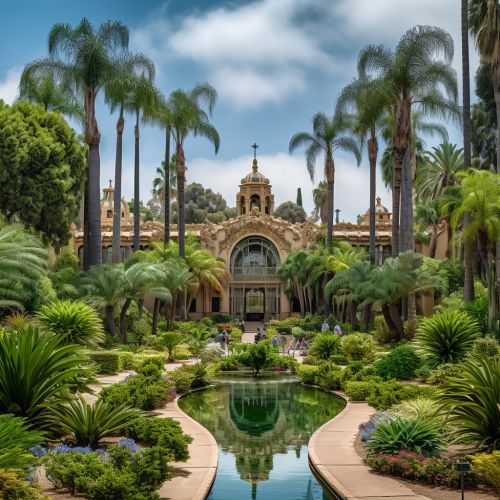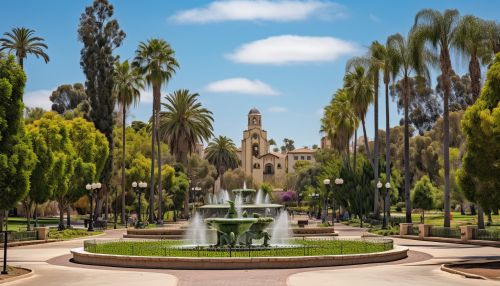Balboa Park, San Diego
Overview
Balboa Park is a 1,200-acre urban cultural park located in San Diego, California. Named after the Spanish maritime explorer Vasco Núñez de Balboa, it is one of the oldest recreational parks in the United States, dedicated to public recreational use since 1835. The park is managed and maintained by the Parks and Recreation Department of the City of San Diego.


History
Balboa Park's history dates back to 1868 when the land was set aside by San Diego civic leaders for a city park. The park was named after Vasco Núñez de Balboa, the first European to cross the Isthmus of Panama and see the Pacific Ocean. The park's development was significantly influenced by two major expositions, the 1915 Panama-California Exposition and the 1935 California Pacific International Exposition, which led to the construction of many of the park's most notable landmarks.
1915 Panama-California Exposition
The 1915 Panama-California Exposition was a world's fair held in Balboa Park to celebrate the opening of the Panama Canal. The exposition led to the construction of many of the park's Spanish-Renaissance style buildings, including the California Building with its iconic bell tower, the Casa de Balboa, and the Casa del Prado. The exposition also led to the creation of the park's central mesa layout and the introduction of several new plant species to the park.
1935 California Pacific International Exposition
The 1935 California Pacific International Exposition was held to boost the local economy during the Great Depression. The exposition led to the construction of additional buildings in the park, including the Ford Building, which now houses the San Diego Air & Space Museum, and the Old Globe Theatre. The exposition also introduced several new attractions to the park, including the Spanish Village Art Center and the Zoro Garden.
Architecture
Balboa Park is renowned for its distinctive Spanish-Renaissance style architecture, which is characterized by its ornate detailing, red-tile roofs, and white stucco surfaces. The park's architecture was heavily influenced by the 1915 Panama-California Exposition, which introduced the Spanish-Renaissance style to the park. The park's most notable architectural landmarks include the California Building, the Casa de Balboa, and the Casa del Prado.
Attractions
Balboa Park is home to a wide variety of attractions, including museums, gardens, and cultural institutions. The park's attractions draw millions of visitors each year, making it one of San Diego's most popular tourist destinations.
Museums
Balboa Park is home to 17 museums, including the San Diego Museum of Art, the San Diego Air & Space Museum, the San Diego Natural History Museum, and the San Diego Museum of Man. The museums cover a wide range of topics, from art and history to science and nature.
Gardens
Balboa Park features 19 gardens, including the Alcazar Garden, the Japanese Friendship Garden, and the Rose Garden. The gardens showcase a diverse array of plant species from around the world and provide a tranquil retreat for park visitors.
Cultural Institutions
Balboa Park is also home to several cultural institutions, including the Old Globe Theatre, the San Diego Youth Symphony, and the San Diego Civic Youth Ballet. These institutions offer a variety of performances and educational programs throughout the year.
Conservation Efforts
Balboa Park is committed to preserving its natural and cultural resources for future generations. The park's conservation efforts are guided by its Master Plan, which outlines strategies for managing the park's resources, enhancing its facilities, and improving visitor experiences.
